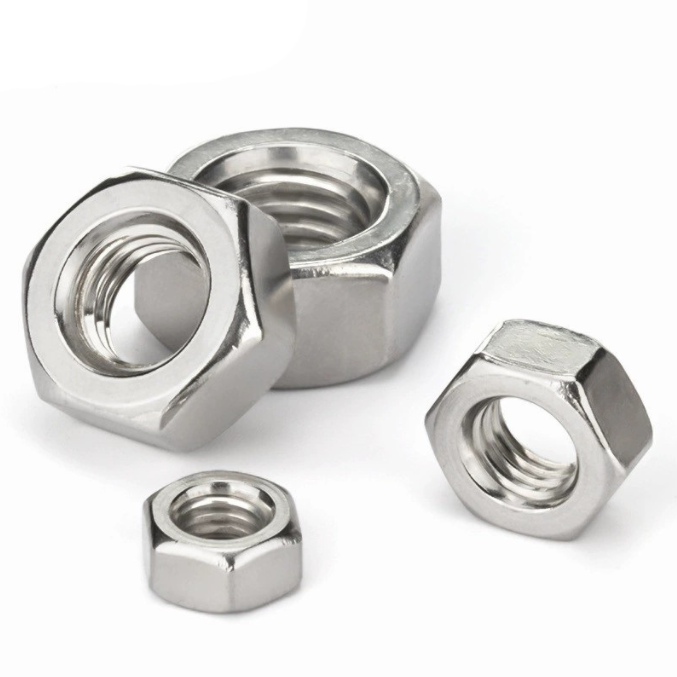

Understanding the Function and Importance of Shear Bolts in Structural Applications
ديسمبر . 31, 2024 16:08 Back to list
Understanding the Function and Importance of Shear Bolts in Structural Applications
Understanding Shear Bolts Function, Benefits, and Applications
Shear bolts are specialized fasteners designed to fail under specific load conditions, providing a safety mechanism for various applications. Unlike standard bolts that are intended to hold components together indefinitely, shear bolts are engineered to break at a predetermined force, preventing further damage to machinery or structures. This article delves into the fundamental aspects of shear bolts, including their function, benefits, and common applications.
Function of Shear Bolts
The primary function of a shear bolt is to act as a sacrificial fastener. In many mechanical systems, components are subject to stress and force, which can sometimes exceed the design limits of the materials involved. In situations where a catastrophic failure could result in significant harm or costly damages, shear bolts provide a necessary fail-safe. They are designed to shear, or break, under a specific load, effectively disconnecting the component and preventing excess energy from being transferred elsewhere in the system.
Shear bolts are commonly used in connection with machinery that experiences variable or unpredictable loads. When the applied load reaches the predefined limit, the shear bolt breaks rather than the equipment itself. This prevents damage to gears, motors, and other critical components, ensuring that repairs can be made easily and cost-effectively.
Benefits of Shear Bolts
One of the most significant benefits of shear bolts is their ability to enhance safety. By allowing certain parts to fail before critical machinery or structures do, shear bolts help to protect both personnel and equipment from dangerous scenarios. This controlled failure mechanism minimizes the risk of a more severe accident, providing peace of mind in high-stakes environments.
Additionally, shear bolts can reduce maintenance costs and downtime. When machinery is designed with shear bolts, it typically requires less frequent repairs since the bolts prevent overload damage to more expensive components. Consequently, when a shear bolt does break, it can often be replaced quickly and easily, allowing operations to resume promptly.
Shear bolts are also advantageous in design flexibility. Engineers can customize shear bolts for specific applications by choosing materials, sizes, and shear strengths to match particular load requirements. This adaptability makes them suitable for a wide range of scenarios, from automotive applications to industrial machinery.
shear bolts

Applications of Shear Bolts
Shear bolts find applications in various industries and are prevalent in situations where safety and reliability are paramount. Here are a few examples of where shear bolts might be used
1. Automotive Industry In vehicles, shear bolts are often used in safety mechanisms, such as in crash protection systems. When the forces during a collision exceed a certain threshold, the bolts shear to absorb energy, protecting passengers.
2. Construction Equipment Heavy machinery, like excavators and bulldozers, often incorporates shear bolts in critical systems. If an overload occurs, the shear bolt breaks before significant damage occurs to the hydraulic systems or structural components.
3. Electromechanical Devices In lawnmowers and other outdoor equipment, shear bolts act as a protective component against mechanical failure when encountering sudden resistance, such as striking a rock.
4. Wind Turbines As these structures are subject to dynamic and varying loads from wind, shear bolts are used to protect the turbine blades and tower connection points, allowing them to shear under extreme conditions without leading to catastrophic failure.
5. Marine Applications Shear bolts are widely used in marine equipment to safeguard against the harsh conditions at sea. They help ensure the safety of boats and their crew by preventing structural failures during unforeseen circumstances.
Conclusion
In summary, shear bolts serve as crucial components in various industries, providing a safety mechanism to prevent catastrophic failures while ensuring the integrity of machinery and structures. Their ability to break at predetermined load levels enhances safety, reduces maintenance costs, and allows for adaptable design solutions. As technology continues to advance, the role of shear bolts in ensuring operational safety and efficiency is likely to grow even further, highlighting their importance in modern engineering practices.
Latest news
-
Secure Threaded Fasteners: Steel, Titanium, Wall, Wood Solutions
NewsAug.21,2025
-
Durable Brass Fasteners: Quality Solutions for Every Project
NewsAug.19,2025
-
High-Strength Hot Dip Galvanized Bolts - Hebei Longze Metal Products Manufacturing Co., Ltd.|Corrosion Resistance, Customizable Sizes
NewsAug.18,2025
-
Hot Dip Galvanized Bolts - LongZe | Corrosion Resistance, High Strength
NewsAug.18,2025
-
Hot Dip Galvanized Bolts-Hebei Longze|High Strength&Corrosion Resistance
NewsAug.18,2025
-
High-Strength Hot Dip Galvanized Bolts - Hebei Longze | Corrosion Resistance, High-Strength
NewsAug.18,2025

